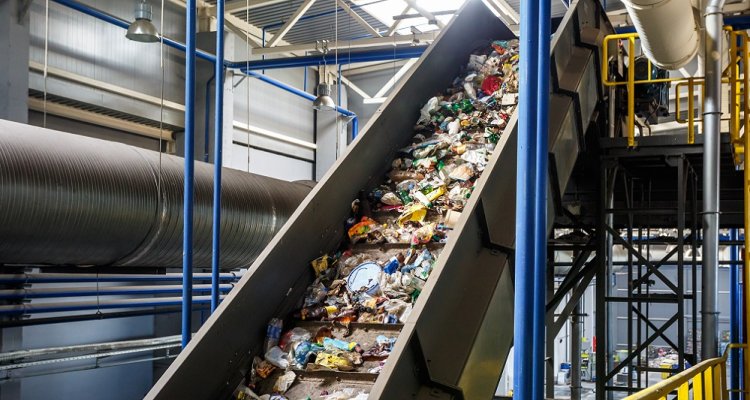
Project
Molecular contamination in recycled plastic film from different collection methods
Post-consumer plastic waste is collected and recycled in different ways. In this project the difference in molecular contamination (mainly odour) has been investigated for two collection systems: separate collection and mechanical recovery of plastics from mixed municipal solid waste.
There are two main methods for the collection of post-consumer plastic packaging waste: separate collection and mechanical recovery of plastics from mixed municipal solid waste (MSW). Separate collection implies that the civilians keep their packaging waste separated from the MSW and offer it for separate collection. Whereas, with mechanical recovery the civilians discard their packaging waste with the MSW and at a central mechanical recovery facility (MRF) the packaging waste is recovered from the MSW by machines.
Comparison between separate collection and mechanical recovery of plastics
Wageningen Food & Biobased Research has been asked by the municipalities of Utrecht, The Hague and Amsterdam and the Learning Center Kunststof Verpakkingsafval to investigate the difference in molecular contamination (mainly odour) between the two collection methods.
In this project plastic packaging poly-ethylene (PE) films from both collection systems have been compared. This was complex, as many results were influenced by incidental contaminations. Examples of possible products causing these contaminations are paint residues, creams, or (olive)oils.
Different characterisation methods were used in this study: first of all we did gas chromatography coupled with mass spectrometry (GC-MS), to identify volatile and medium to non-volatile compounds. The resulting graphs (gas chromatograms) were in all cases packed with peaks, which indicates the presence of a lot of volatile and medium to non-volatile compounds (each peak corresponds to an unique molecule). Due to the huge amount of peaks, not all molecules could be identified.
Sensory panel
Both types of plastic packaging films are also subjected to a sensory panel analysis to characterise odour attributes. Both films do have an odour. Recycled material from separate collection had a rancid nut-like odour, while recycled material from a MRF had an earthy, musty odour.
The films from separate collection and from a MRF have been recycled in different ways, to investigate if the recycling process influences the odour of the end product. The recycling process consists of the following steps: milling, washing (cold/warm water and with/without alkaline solution). As a next step pellets were produced via extrusion. These pellets can be used to produce plastic products.
The same analyses have been executed again for all different samples. GC-MS showed that for the separately collected material the odour is not strongly affected by the recycling method. However the intensity of the peaks observed in the gas chromatograms decreased after washing with warm water plus a base and after extrusion with vacuum. From this, it can be concluded that washing and extrusion does remove some molecules but that this is insufficient to remove all odour active compounds.
The recycling method and extrusion have, in contrast to the PE-foil sorted product from separate collection, a strong influence of the recycled material’s odour when the PE-foil sorted product was obtained from a MRF. After washing with cold water and extrusion, the recycled material had a strong burnt odour. When the sorted product was washed with warm water or with a base, the recycled material had a soapy, detergent-like, earthy, musty odour profile. Apparently, the molecules that cause this burnt odour can easily be removed by washing with warm water.
No significant difference
It can be concluded, based on the results of this exploratory study, that there is no significant difference in the molecular contamination in recycled material originating from separate collection or mechanical recovery. Both recycled materials have an odour, but the main attributes differ. The preferred collection system should be chosen by taking a broader context into account: not only technical aspects but also economic and societal aspects should be taken into account.